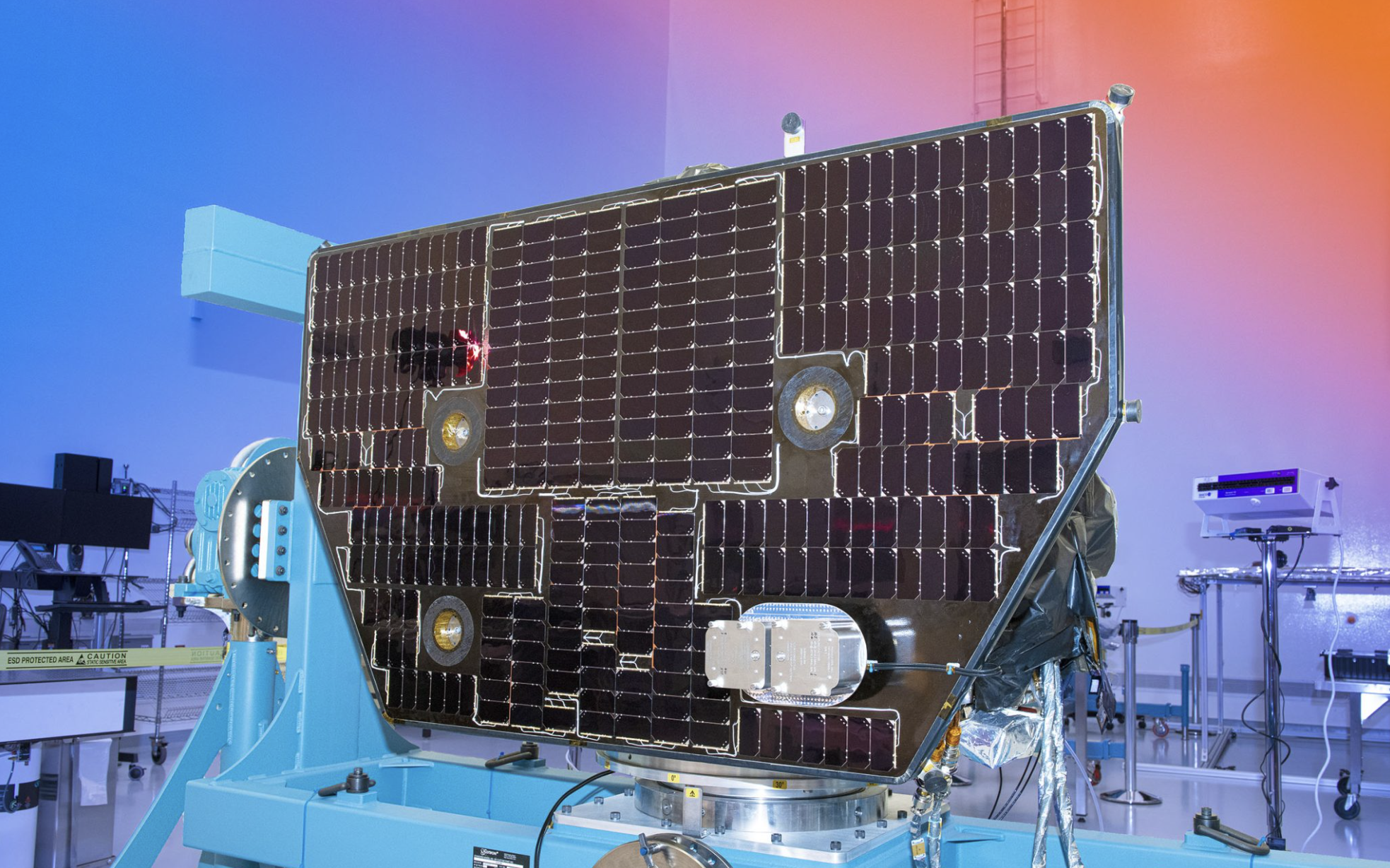NASA Launches Spacecraft with Instruments to Study Earth’s Hydrogen Halo
Mission operated and managed by UC Berkeley Space Sciences Lab launched today
NASA’s Carruthers Geocorona Observatory launched on a SpaceX Falcon 9 rocket from Kennedy Space Center in Florida this morning. Carruthers is now traveling toward the Sun, around which it will enter solar orbit almost a million miles away from Earth. Carruthers will then focus its two ultraviolet (UV) cameras on Earth’s exosphere—the outermost layer of the atmosphere.
Carruthers is led by principal investigator Lara Waldrop, an associate professor at the University of Illinois Urbana Champaign. The project scientist is Thomas Immel, a senior fellow at UC Berkeley’s Space Sciences Laboratory (SSL), which also pilots and operates the spacecraft and built the instrumentation in partnership with the Space Dynamics Laboratory. BAE systems built the SmallSat spacecraft. This team is poised to make the first in-depth measurements of the entire exosphere and uncover hidden facets of space weather.
“Humanity has only captured four images of Earth’s full exosphere with sensors that were not specifically calibrated for the task. Carruthers is really going to revolutionize our understanding of the exosphere,” says Waldrop.
The exosphere has been maddeningly difficult to study because of its incredible size. Waldrop likens the Earth to an apple and the lower levels of the atmosphere the skin of the apple. The exosphere would be the size of a beach ball to that apple Earth. Satellites orbit within the lowest reaches of the exosphere and have measured its density within their orbital paths, but images of the entire exosphere proved elusive for a long time.
The first image of the exosphere was captured by Apollo 16 astronauts with a UV camera invented by George Carruthers, a scientist at the Naval Research Laboratory and namesake of the Carruthers mission. Even on the Moon, the camera was too close to properly capture the entire exosphere within its field of view, but it did capture a radiant UV halo surrounding the Earth—a phenomenon that came to be known as the Geocorona.
Understanding of the exosphere hadn’t advanced much by the early 2000s as Waldrop became a PhD student in space physics at Boston University. We knew that the exosphere was composed mostly of atomic hydrogen, that its density varied with the seasons and that it interacted with plasmas in the Earth’s magnetosphere, but that was about it. Waldrop focused her postdoctoral research on the exosphere and continued to study it throughout her career. She recently demonstrated how some exospheric hydrogen is lost to space via interactions with plasma from the magnetosphere.
For years, Waldrop’s study of the exosphere was limited to observations gathered by Earth-bound and satellite UV cameras. She knew that we’d never fully understand the whole exosphere without a much wider field-of-view. She proposed a mission to NASA that would travel to the Lagrange point between the Earth and the Sun (L1)—where the gravitational influence of both bodies is balanced. The mission, which was originally named Global Lyman-alpha Imagers of the Dynamic Exosphere (GLIDE), was funded by NASA in 2020.
The University of Illinois Urbana Champaign had never led a NASA mission before, so Waldrop turned to SSL—which has over 60 years of experience in designing, managing and leading space missions—for assistance. Engineers and technicians at SSL, under the guidance of project manager William Craig, designed and built the instruments that enable Carruthers to obtain UV images of the entire exosphere. The spacecraft is operated by SSL’s multi-mission operations center.
“Lara is an energetic and esteemed scientist, but the University of Illinois didn’t have the infrastructure to build the mission. SSL’s expertise in designing and building missions and our long history researching space weather made this a natural partnership,” says Craig.

Once it reaches L1, Carruthers’ UV cameras will focus on the exosphere and begin capturing 3 images each hour. The brightness of the geocorona will indicate particle density, and in comparing images taken over long periods, the Carruthers team will be able to track the seasonal variations in the exosphere as well as transient changes driven by coronal mass ejections (CMEs), which are vast clouds of plasma that explode from the Sun’s atmosphere. CMEs can supercharge Earth’s magnetic field—an event known as a geomagnetic storm, which can damage satellites, disrupt electrical grids and interfere with telecommunications.
Understanding the exosphere is critical to developing better models of geomagnetic storms. Not only is it the part of the atmosphere where satellites operate, but the neutral gas in the exosphere can de-energize charged plasmas that blast down from the magnetosphere. The specific density and variability of the exosphere may be the key to understanding which geomagnetic storms will cause damage to our infrastructure. Though there are many active missions studying the magnetosphere, we’ll never get a complete understanding of geomagnetic storms without also understanding the exosphere.
“I expect Carruthers will change how we see our place in the solar system, providing critical science and space weather data for researchers and the U.S. Government,” says Waldrop.
Carruthers launched as part of a rideshare that included the National Oceanic and Atmospheric Administration’s Space Weather Follow On-Lagrange 1 (SWFO-L1) mission and NASA’s Interstellar Mapping and Acceleration Probe (IMAP) mission. SWFO-L1 will act as a space weather observatory, bolstering NASA’s aging fleet of solar monitoring spacecraft. SSL built the SupraThermal Ion Sensor for the mission. IMAP will chart the boundary of the heliosphere—the protective bubble created the by the solar wind, which helps protect our solar system from cosmic rays. SSL leads the space weather data capability for the Active Link for Real-Time experiment on IMAP. SSL also built a low-voltage power supply for IMAP’s High-energy Ion Telescope.
